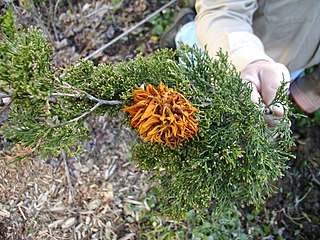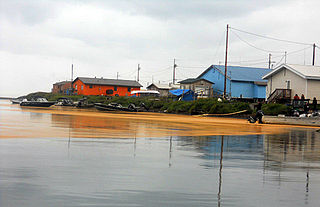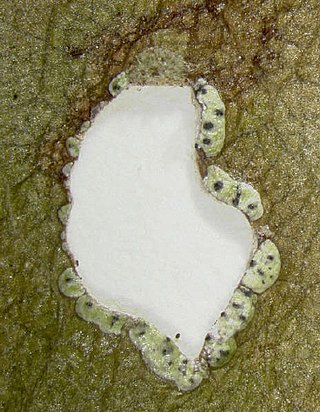
Gymnosporangium is a genus of heteroecious plant-pathogenic fungi which alternately infect members of the family Cupressaceae, primarily species in the genus Juniperus (junipers), and members of the family Rosaceae in the subfamily Amygdaloideae. The common name cedar-apple rusts has been used for these fungi. According to the Dictionary of the Fungi, there was 57 species in the genus. In 2023, Species Fungorum lists up to 74 species.

Rusts are fungal plant pathogens of the order Pucciniales causing plant fungal diseases.

The Nectriaceae comprise a family of fungi in the order Hypocreales. It was circumscribed by brothers Charles and Louis René Tulasne in 1865. In 2020, an Outline of fungi was produced and listed 70 genera and about 1,336 species.

Puccinia recondita is a fungus species and plant pathogen belonging to the order of Pucciniales and family Pucciniaceae.

Pleosporaceae is a family of sac fungi. They are pathogenic to humans or saprobic on woody and dead herbaceous stems or leaves.

The Botryosphaeriales are an order of sac fungi (Ascomycetes), placed under class Dothideomycetes. Some species are parasites, causing leaf spot, plant rot, die-back or cankers, but they can also be saprophytes or endophytes. They occur world-wide on many hosts. For example, in China, infections related to Botryosphaeriales have been recorded on numerous hosts such as grapes, Caragana arborescens,Cercis chinensis, Eucalyptus, Chinese hackberry, blueberry, forest trees, and various other woody hosts.

Phyllachoraceae is a family of sac fungi.

The Arthoniaceae are a family of lichenized, lichenicolous and saprobic fungi in the order Arthoniales. The Arthoniaceae is the largest family of Arthoniales, with around 800 species. Most species in Arthoniaceae belong in Arthonia which is the largest genus with 500 species. The second and third largest genus is Arthothelium with 80 species, and Cryptothecia with 60 species.
The Melanommataceae are a family of fungi in the order Pleosporales. Taxa are widespread in temperate and subtropical regions, and are saprobic on wood and bark.
Trailia is a genus of fungi in the family Halosphaeriaceae.
The Asterinaceae are a family of fungi in the class Asterinales.

The Anthracoideaceae are a family of smut fungi in the order Ustilaginales. Collectively, the family contains 20 genera and 198 species. Anthracoideaceae was circumscribed by the Bulgarian mycologist Cvetomir M. Denchev in 1997.

The Chaconiaceae are a family of rust fungi in the order Pucciniales. The family contained 8 genera and 75 species in 2008. By 2020, there were 8 genera and 84 species.

The Coleosporiaceae are a family of rust fungi in the order Pucciniales. The family contains 6 genera and 131 species. It was updated in 2020, to 7 genera and 173 species.
The Mikronegeriaceae were a family of rust fungi in the order Pucciniales: now incorporated into the Zaghouaniaceae. The family contained 4 genera and 13 species.
The Pucciniosiraceae are a family of rust fungi in the order Pucciniales. The family contains 10 genera and 57 species.

Edwin Butterworth Mains (1890–1968) was an American mycologist. He was known for his taxonomic research on the rust fungi (Pucciniomycetes), the genus Cordyceps, and the earth tongues (Geoglossaceae).

Strigulaceae is a family of lichen-forming fungi, one of two families in the order Strigulales. Recent (2020) molecular analysis of the type genus, Strigula, has led to a reallocation of the foliicolous species into six genera that correspond to well-delimited clades with diagnostic phenotype features.
Pucciniosira is a genus of rust fungi belonging to the family Pucciniosiraceae.

The Zaghouaniaceae are a family of rust fungus genera, some of which have long been considered incertae sedis in the order Pucciniales, based on the type genus Zaghouania. The classification of fungal taxa based on only morphological characteristics has long been recognised as problematical, so this order was reviewed over a long-term study using three DNA loci and published in 2021.














